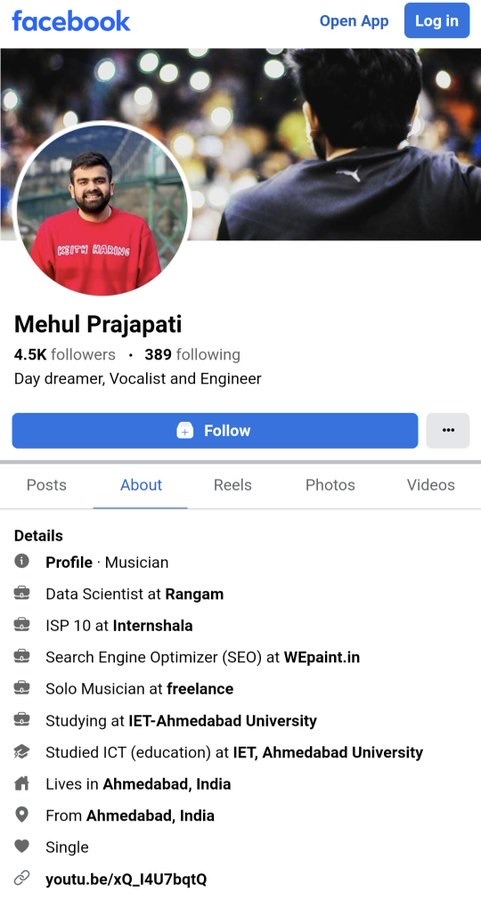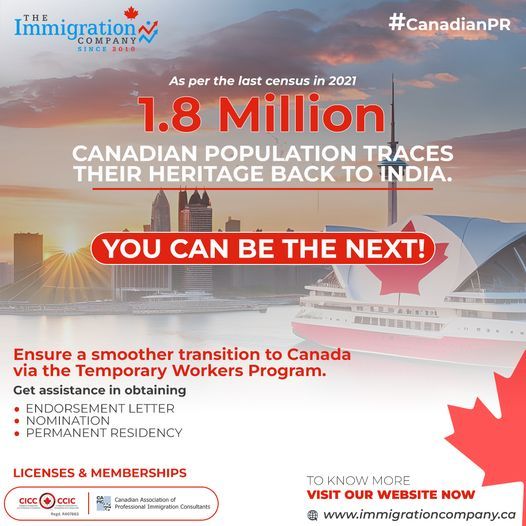#indian immigration to canada
Text
"The category of race was also critical to the second pillar of the CFU’s [Canadian Farmworkers Union] organizing mission: ridding the industry of contractors. Contractors would supply the labour force for the farmers and, in many cases, they held as much power as the farmers. The contractor was responsible for hiring a workforce, maintaining discipline, and making payments. The farmer would not pay the workers directly; instead, the farmer would pay the contractor who, in many cases, would retain the money until the end of the season.
In many instances, the contractor was also responsible for transporting workers between the field and their homes. Since labour contractors were trying to maximize profits, the vehicles they used to transport workers predictably violated many road safety standards. As Chouhan remembers, his first contractor: “came to pick me up in an Econoline van which had no seats in it, there were people sitting on the floor which was quite a shock [laughs]. No seat belts, no nothing.” Many workers have been killed due to accidents in these unsafe vehicles, and, as recently as 7 March 2007, three farmworkers died in a rollover accident while riding in an overcrowded vehicle between Abbotsford and Chilliwack.
Often, contractors were from the same social and ethnic circles as the labourers whom they employed. Charan Gill identified a “colonial mentality” in comments made by farmworkers. Since the contractors who provided them with work shared familial and cultural ties with them, some of which could be traced back to Punjab, many farmworkers did not want to stand up to the contractors. Fears of losing jobs and housing were very real, and such losses could jeopardize their immigration status. Contractors who came from the same community as the workers could manipulate the latter into believing they were on their side, and, because of this, Gill notes: “in spite of our efforts, individual interests [of workers] sometimes invalidated collective interests [of their class]” because some of those workers aspired to be contractors.
Simply getting safety information to farmworkers was also difficult. Since many of the workers could not read or write in English, and some were illiterate in their own languages, they were often dependent on information from the farmer and the contractor. Contractors could intentionally mislead, omit certain information, or outright lie to their workers about their legal rights. This delayed organizing efforts. To counter this information block, organizers would try to go to local temples on the weekends, where many workers went to pray. However, the labour contractors also had control over the temple executives, so organizers were often refused the right to speak. Frustrated, the organizers developed a two-part strategy. First, they would have “kitchen meetings” in which the organizer would contact one worker for a meeting in their home, and that worker would contact neighbours and friends, so “that way [they would] not [be] afraid to be seen by a labour contractor or in the temple or in a public place.” Second, because many families used the temples for social events, the organizers would ask family members to invite the CFU and thus circumvent the temple executives as organizers of social events had the “absolute right to invite anyone they want[ed].”
These strategies helped the CFU reach out to potential members and to provide valuable information regarding their legal rights. Unfortunately, despite the efforts of the CFU, contractors are still a part of the industry to this day, and anyone driving through the agricultural areas of British Columbia’s Lower Mainland can witness the painted-over shuttle buses that daily transport farmworkers from home to field."
- Nicholas Fast, ““WE WERE A SOCIAL MOVEMENT AS WELL”: The Canadian Farmworkers Union in British Columbia, 1979–1983,” BC Studies. no. 217, Spring 2023. p. 44-45.
#canadian farmworkers union#participatory democracy#union organizing#farm workers#agricultural workers#indian immigration to canada#immigrant workers#racialized workers#farming in canada#working class struggle#academic quote#strike#union politics#labour contracting#exploitation#reading 2024
8 notes
·
View notes
Text

1. Black Americans were enslaved and amalgamated in America.
2. Black Americans built the foundational cities and patented tens of thousands of inventions in America.
3. Black Americans fought in every war, WON the Civil War, and are symbolized by the Statue of Liberty in America.
4. Black Americans have never been repaired from past or present harms. In fact, immigrants are succeeding in destroying the Civil Rights programs established for Black Americans.
#canada#immigration#indians#canada and east indians#asians#new countries#FBA#Black Lives Matter#Black History Matters
15 notes
·
View notes
Text
being indian diaspora is stupid because americans think you’re weird cringe and stupid but on the other hand indians think you’re weird cringe and stupid
#cactus.txt#reading about the recent canada indian incident which was almost funny bc#canadians were coming out in droves to talk about how much they hate indian immigrants#and indians were ALSO coming out in droves to talk about how much they hated emigrants
1 note
·
View note
Text


This man who has a good job pretended to be a student to access services from a food bank! Unfortunately such abuse isn’t uncommon to find there are videos of immigrants and international students alike teaching other foreigners how to scam services that are for in need Canadians! This is even more remarkable when you realize by law international students must show they have adequate financial support before coming here.
Such abuse should result in deportation!
#voteppc to hold these people accountable
#india#indian#indian politics#international#international students#cadpoli#cdnpoli#deport#food banks#aid#scam#deportation#deportation flights#donation scam#ppc#people's party of canada#canada first#canada#populism#immigration#mass migration#street photography#fired#bank#scam artists#foreign#voteppc
0 notes
Text
instagram
#immigration#visa#h-1b#green card#perm#h-1b visa#uscis#india#us#usa#h 1visa#h 1b visa transfer#work permits in the us#work permit for canada#permit#permanent#marriagecases#green card by marriage#marriage cases#h 1b lottery results#h 1b nafta visa immigration cbp cis ice#education green card visa h 1b visa ewi#e 1 visa#e 2 fragomen#e 2 investor#e 2 visa#times of india#indian#lawyer naturalizatin#bestimmigrationlawyer
0 notes
Text
Ready to ditch the tourist visa and explore on your own terms? Dive into this comprehensive guide to PR, discover its benefits, and find out if it's the perfect travel upgrade for you!
#uglyandtraveling#travel around the world#travel blogger#ugly & traveling#travel channel#travel backpack#travel#travel vlog#ugly and traveling#traveling vlog#benefits of permanent residency abroad#Benefits of PR#canada permanent residence for indian#canada permanent residence for pakistani#canada Permanent Residency#education with permanent residency#england Permanent Residency#europe Permanent Residency#expat community for permanent residency#healthcare with permanent residency#how to get permanent residency#how to get permanent residency in uk#immigration lawyer for permanent residency#investment for permanent residency#ireland permanent residence#is permanent residency right for me#pathway to citizenship through permanent residency#Permanent residency#permanent residency [invalid URL removed]#permanent residency application process
0 notes
Text

Study in Canada After 12th | Visa Assistance for Indian Students
Explore opportunities to study in Canada after 12th with expert guidance. Discover seamless Canada study visa processes for Indian students.
#study in Canada after 12th#study in Canada for Indian students#study in Canada from India#study in Canada#Canada study visa#best Canada immigration consultants in Chandigarh#Puneet Immigration Solutions
0 notes
Text

What is a Schengen visa and how to get it quickly?
The Schengen visa was introduced for visiting the Schengen area created by the European Union countries and it has been effective since March 1995. It has come to known by this name because the treaty was signed at the town of Schengen, Luxemburg. This visa is meant for short duration visit amounting up to 90 days. The visa holder can visit any Schengen state however the visa must be applied from the main destination country. It is a short term visa that allows you to spend time on business or pleasure. Borders at these Schengen area countries have been abolished and you can just cross over to a member country without the need of extensive checking or searching. The visa allows you to get across the border by driving your vehicle at low speed and without stopping at border check points. Can I get Schengen visa in week? If this is the question rising from your mind then you should consult a Schengen visa expert or lawyer in Chennai.

What is the eligibility for a Schengen visa?
Any applicant not hailing from European Union countries can apply for this visa. You should explain the reason for visiting and the time frame required to accomplish your aims. You will also need to produce valid passport that can last for a minimum of 3 months after you have applied for the visa. By holding a Schengen visa you will be able to visit Germany, Belgium, Austria, Czech Republic, Italy, Latvia, Croatia, Estonia, Denmark, France, Lithuania, Netherlands, Spain, Norway, Malta, Slovenia, Switzerland, Sweden, Greece and other European Union countries that have opted for the creation of Schengen states. You can apply for this visa only after entering the main destination of the Schengen state areas.

How to get a job abroad from India? Getting a job in a foreign country is the aspiration of most Indian populace seeking jobs, business, or fame. Getting a job abroad promises increased emoluments, better living conditions, better educational and professional opportunities, better tax rates, favorable living conditions, etc. To get a job in a foreign country you will need a sponsor or foreign business establishment to issue the visa. Without sponsorship, it is not possible to get a job in Canada or any other country and the sponsors may be a business house, institution, or a project run by a Canadian firm. The process may be made simply by Visa Nook, Chennai, India as they are well-established visa services catering to a variety of foreign visas required by Indian citizens. Get in touch with them on phone numbers +91 9150072411, +91 9150072412, or send mail to [email protected] to get your visa quickly.
#Can I get Schengen visa in week?#get a job abroad from India#immigration lawyer canada in chennai#immigration consultants in chennai#immigration lawyers in chennai#indian immigration lawyer#immigration lawyers near me#canada visa consultants in chennai
1 note
·
View note
Text
Canada Citizenship & Residency by Investment
Ajmera Law Group is a well-known immigration firm that helps you get Canada citizenship by investment. Our experts will guide you with all inquiries and documentation throughout the immigration process. Contact us today to learn more about the immigration investment program.
#canada citizenship by investment#canada Immigration consultant in Aahmedabad#canada immigration lawyer in ahmedabad#canada immigration lawyer in India#canada investor visa consultant#canadian citizenship by investment for indian
0 notes
Text
youtube
Transforming Your #Canada #Visitor #Visa into a Lucrative #WorkPermit." Our comprehensive #guide will navigate you through the necessary #steps, requirements, and advantages of converting your visitor status into an #employment_opportunity in #Canada. Uncover the various pathways to professional development and job possibilities in this vibrant and diverse country. Don't overlook the chance to embark on a rewarding career journey by starting your transformation today!
#CanadaVisitorVisa Convert to Work Permit 2023#VisitorVisa &#WorkPermitProcess#VisitorVisa_Convert to Work Permit#canada work permit#canada work permit visa 2023#convert visitor visa to work permit canada#canada pr#canada visa#canada immigration#canada immigration 2023#canada visitor visa to work permit process#Canada update#Canada Tourist visa 2023#Canada immigration updates 2023#Canada Visa#Canada Tourist visa#How this update will affect Indians#Canada Tourist visa updates 2023#Canada travel update#Canada visa 2023#Canada Student Visa#Super Visa Canada#Canada visa updates 2023#canada tourist visa processing time#canada tourist visa processing time after biometrics#canada tourist visa processing time 2023#canada tourist visa 2023 processing time#canada visitor visa processing time after biometrics#canada tourist visa processing time canada
0 notes
Text
"In many ways, the Canadian Farmworkers Union (CFU) and its predecessor, the Farmworkers Organizing Committee (FWOC), operated like a trade union. The CFU executive chose three related areas on which to focus its organizing efforts: (1) improving working and living conditions, (2) eliminating the contractor system that further exploited already vulnerable workers, and (3) fighting to include farmworkers in the BC labour code, affording farmworkers rights to minimum wage and health benefits.
Working and living conditions constituted one of the main pillars that organizers rallied around to push their efforts. One story was often used in CFU documents as a rallying cry:
On July 16, 1980, little Sukhdeep Madhar lay sleeping in a cow stall converted into sleeping quarters when, unknown to her parents working in the fields close by, she rolled off her cot. The seven month-old baby drowned in a bucket of drinking water before being discovered. Ruling the tragedy as an accidental death, Dr. Bill Macarthur, Coroner, said that working conditions on the farm were like those found in Nazi concentration camps.
Further, while out in the field, workers found that many farms did not have running water or washroom facilities. Other farms did not have places for children who had to attend work with their parents (or for workers on breaks) to sit in the shade on hot days. In addition to unsafe working conditions in the field, workers who did not have enough money for housing would have to live in converted barn stalls on the farm where they worked. These stalls would often have simple hay and straw as flooring with small cots for sleeping. Some living quarters did not have running water, heating, or washroom facilities. Finally, it was not uncommon for farm owners and operators, or even for the contractors who acted as intermediaries, to withhold wages from workers until the end of the season (should they be paid at all).
Despite its small size, the CFU was relatively successful in improving working conditions, especially with regard to securing stolen wages. The first test for the FWOC was a dispute between Mukhiter Singh and the contractor that he had hired to provide a labour force. On 17 July 1979, workers contacted the FWOC to help set up a picket line after they discovered that Mukhiter was withholding $100,000 owed for six weeks of labour because he was unsatisfied with the pickers’ work. The FWOC immediately sent out “several dozen Committee members” and “joined two hundred workers on the picket lines.” After a tense standoff, Mukhiter offered to pay $40,000 in wages, but the farmworkers refused the offer. After roughly two hours of negotiations with Chouhan, Mukhiter paid the workers $80,000 and the dispute was settled. This incident was the first major victory for the FWOC.
The following year, a larger battle took place with a much larger grower: Jensen Mushroom Farms in Langley. On 18 July 1980, despite the grower’s assertion that “if they don’t like it [working conditions], they can quit,” Jensen Mushroom Farms became the first agricultural work site to be certified by the Labour Relations Board (LRB). While this did not mean the workers had a contract, the LRB ruling did mean that the union could negotiate on behalf of the workers. This was the first ruling of its kind in BC labour history. The first signed contract would come from a different farm, Bell Farms. The owner, Jack Bell, was relatively sympathetic to unions and did not offer any resistance to workers who organized for union representation. That LRB certification would come on 3 September 1980, and the first contract would be ratified on 18 November.
While getting a certification was the first step, the process to signing a contract could be extremely drawn out. After nine months of negotiations at Jensen Farms with little progress, the CFU voted to strike on 14 April 1981. Here, Jensen demonstrated his resolve to prevent a union from entering his workplace. On the first day of picketing, an altercation between Chouhan and some of Jensen’s family members left Chouhan with a cut on his forehead, and each side pointed to the other as the instigator. A CFU organizer at the picket line, Sandi Roy, describes in a police report how Annie Hall, Jensen’s daughter, struck Chouhan in the head with keys, “causing him to bleed profusely.” Immediately after the altercation, Murray Munroe, Jensen’s son-in-law, “and at least three of the passengers of both trucks [that had transported Jensen’s family to the picket line] exited from the trucks and began running towards Mr. Chouhan and pushed him into a roadside ditch.” No legal action was taken by either party.
As the strike wore on, the CFU described “various forms of violence from name calling, to car pounding, to a physical scuffle, to telephone wires being cut, to trucks being chased at high speeds, to an attempt to burn down a trailer while a picketer was sleeping inside.” Despite ten workers scabbing (union strikebreaking) and extreme tension on the picket line, the line held strong until September 1981, when it was finally lifted. Formal contract negotiations would not recommence until May 1982, and on 30 July 1982, more than a year after the certification, a formal contract was signed.
Getting a contract after a long strike was one matter, but managing to maintain certification with a stubborn owner was also a difficult task. According to the CFU, the fourteen remaining workers who returned to work at Jensen’s were evenly split on the issue of the union. In June 1983, ten months after the strike’s conclusion, the number of people who worked at Jensen’s had increased to forty seven, and the turnover rate was high. This meant that many of those who supported the union had left and that those who remained were now outnumbered in the workplace. Jensen also began to hire his immediate family members as employees to reduce the strength of the union. The family members intimidated workers who were worried about being identified to the employer as pro-union. When shop stewards were elected, Jean Hall – whose relation to the aforementioned Annie Hall is unclear – was elected for labourers and Rajinder Gill was elected for pickers. The CFU claimed that “the election of Jean Hall was orchestrated by Tove Nesbitt and Jens Jensen (Jensen’s daughter and brother).”
Clearly, Jensen was determined to break the union by inserting his family members into the union’s structure. Union meetings became difficult places to be and were reported by workers to be dominated by Jensen’s family members. According to the CFU, “at one time Jensen had nine family members working at the farm and on average there were seven.” Workers felt intimidated at meetings because they feared that their concerns would be passed back to Jensen and that they could be disciplined or fired. On 1 April 1983, Jensen’s employees applied to the LRB for decertification, and, despite the CFU’s confidence that the decertification vote would fail, on 8 July it passed by a count of 23 to 22. The CFU, understandably disheartened, put some blame on recent immigrants, who were “in awe of ‘authority’ figures” and did not want to appear pro-union to new employers.
During an investigation of Jensen Farms by the provincial government’s Ministry of Labour, R.F. Bone noted some troubling practices on the part of the employer. First, at the time of the strike, it was estimated that 90 percent of the workforce was South Asian and that most supported the union. During the strike, many of these workers left for other jobs because they needed to support themselves. After the strike, Bone noted: “all employees hired (approx. 17) have been non-East Indian, except for four young ladies, all related to the only two East Indians (Gurmit Kaur and Sukhbir Kaur) employed before the strike who then and still are strongly anti-union.” These hires were Euro-Canadians and Laotians. Since the mushroom farm had different greenhouses, Jensen had the Laotians working in areas away from the pro-union employees and had scheduled the pro-union employees to work during union meetings. This tactic allowed the anti-union workers who still attended meetings to elect Jean Hall and Gurmit Kaur, workers who scabbed during the strike, to be delegates for the CFU National Convention in April 1984. Both delegates were expelled from the convention after this revelation and were deemed members “not in good standing.” Finally, Jensen attempted to have the CFU barred from any certifications for one calendar year – an attempt that was denied by the LRB.
This battle had an underlying racist tone. As demonstrated by Jensen’s practices after the strike, Jensen was actively avoiding South Asians. Other anti-union employees also hinted at an ethnic divide. Fred Forman, a white worker hired after the strike, suggested: “if I had a grievance, I don’t think it would work because I’m the wrong colour.” Farmers, including Jensen, used the idea that the CFU was an exclusively South Asian union to discourage membership among newly hired Laotians and whites as well as to discredit the union among its current members."
- Nicholas Fast, ““WE WERE A SOCIAL MOVEMENT AS WELL”: The Canadian Farmworkers Union in British Columbia, 1979–1983,” BC Studies. no. 217, Spring 2023. p. 41-44.
#canadian farmworkers union#participatory democracy#union organizing#farm workers#agricultural workers#indian immigration to canada#immigrant workers#racialized workers#farming in canada#working class struggle#academic quote#strike#union politics#scabs#strikebreaking#reading 2024
2 notes
·
View notes
Text
Best consultancy How to get Canada citizenship for Indian
how to get Canada citizenship for Indian, Apply For Canadian Citizenship From India, Immigration Company gives you the best consultancy service.





#canada#immigration#services#canadavisa#immigration company in canada#Best consultancy#get Canada citizenship#citizenship#citizenship for Indian#Canada citizenship
0 notes
Text
Canada Immigration Process Time from India
Dreaming of a life in the Great White North? Canada’s diverse landscapes, friendly communities, and robust opportunities make it an appealing destination for immigrants worldwide. If you’re in India and considering making the move, understanding the Canada Immigration Process Time from India is crucial.
Understanding the Basics
Express Entry System: One of the most common pathways for skilled workers is through the Express Entry system. This points-based system evaluates candidates based on factors like age, education, work experience, and language proficiency. The Comprehensive Ranking System (CRS) assigns points, and candidates with higher scores are invited to apply for permanent residency.
Provincial Nominee Program (PNP): Provinces and territories in Canada have their own immigration programs, known as Provincial Nominee Programs. These programs target specific skills and occupations needed in each region. If you have skills in demand in a particular province, you may receive a nomination that enhances your chances of obtaining permanent residency.
Understanding the Timeframe
Now, let’s delve into the time it takes to navigate the immigration process.
Express Entry System:
a. Expression of Interest (EOI): The journey begins with creating an online profile on the Immigration, Refugees, and Citizenship Canada (IRCC) website. This involves providing detailed information about your skills, work experience, education, language proficiency, and other relevant details. The process of creating this profile usually takes a few hours.
b. Invitation to Apply (ITA): Once your profile is in the Express Entry pool, you’ll be assigned a CRS score. Periodically, IRCC conducts draws where candidates above a certain CRS threshold are invited to apply for permanent residency. The time between submitting your profile and receiving an ITA can vary. On average, it might take a few months, but it’s essential to stay updated on draw results and CRS score trends.
c. Document Submission and Verification: After receiving an ITA, you have around 60 days to submit your complete application, including supporting documents. This stage involves obtaining police clearances, medical exams, educational credential assessments, and other necessary paperwork. The time required here depends on how quickly you can gather these documents.
d. Processing Time for Permanent Residency: Once you submit your application, IRCC aims to process it within six months. However, processing times can vary based on factors like the volume of applications and the completeness of your file.
Provincial Nominee Program (PNP):
a. Expression of Interest (EOI) or Application Submission: The process starts with expressing your interest or directly applying to the specific provincial nominee program. The time it takes for a province to review your application and issue a nomination can vary. Some provinces process applications more quickly than others.
b. Nomination and Express Entry Integration: If you receive a provincial nomination, it significantly boosts your CRS score in the Express Entry system, leading to a faster ITA. The time it takes for this integration varies and depends on factors like communication between the province and federal authorities.
c. Federal Application Process: Similar to the Express Entry system, once you receive a provincial nomination, you need to submit a federal application. This includes providing supporting documents and undergoing medical examinations. The processing time at the federal level is approximately six months.
Make sure check this link:- after biometric how long to get canada study visa
Tips to Expedite the Process
Language Proficiency: Achieving a high score in language proficiency tests, such as IELTS, can significantly improve your CRS score. This, in turn, enhances your chances of receiving an ITA sooner.
Education Credential Assessment (ECA): Start the process of obtaining an ECA early. This assessment validates your foreign educational credentials and is a crucial part of your application. A delay in obtaining this assessment can slow down your overall timeline.
Document Preparedness: Being proactive in gathering required documents, such as reference letters, employment records, and educational transcripts, can streamline the application process. Ensure that all documents are up-to-date and accurate.
Stay Informed: Regularly check IRCC updates, draw results, and any changes to immigration policies. Staying informed about the latest developments can help you adjust your strategy accordingly.
Conclusion
Embarking on the journey to immigrate to Canada from India is an exciting and life-changing decision. While the Canada immigration process time may seem daunting, understanding the steps and being prepared can make the process smoother. Patience and diligence are key, and with the right information and approach, you can turn your Canadian dream into a reality.
0 notes
Text

The least convincing ad ever 😂
#india#indiabucketlist#indian#brampton#ghandi#alberta#advertising#indian politics#cadpoli#alberta politics#go train#go station#canada first#canada#immigration
0 notes
Text
English a translation:
IACC Special Session on 'US Immigration Law Options'
IACC Special Session on 'US Immigration Law Options'
'યુએસ ઇમિગ્રેશન લો ઓપ્શન્સ' પર IACC વિશેષ સત્ર
IACC's Special Session on 'US Immigration Law Options'
'યુએસ ઇમિગ્રેશન લો ઓપ્શન્સ' પર IACCનું વિશેષ સત્ર
April 6, 2024
AHMEDABAD: The Indo-American Chamber of Commerce (IACC), Gujarat region, is committed to strengthening ties between India and the US. A special seminar on 'US Immigration Law Options' for business and investors was organized at Ahmedabad on Saturday in collaboration with leading chambers and Silver Oak University. Sponsored by NPZ Law Group and CMB Swiss Co-USA, the event provided information on immigration laws to entrepreneurs and investors looking for opportunities in the US.
David Nachman, Esq., Managing Attorney Founder, NPZ Law Group, Girish Mohile, Vice President, CMB Swiss Co India, SnehalBatra, Esq. Managing Attorney of NPZ’s Raritan NJ offices and Ranjit Prakash, Investor Relations Manager, CMB Regional Center were present as special speakers for the session. The session was particularly important for professionals and stakeholders interested in international trade. In which information was given about the latest changes in immigration law. Businesses and investors looking to take advantage of opportunities in American markets need to understand US immigration laws, said David Nachman, Esq. The objective of this session was to remove complexities and provide proper guidance on the legal framework.
IACC Gujarat Region President Kusum Kaul Vyas said the collaboration between IACC, Silver Oak University, NPZ Law Group and CMB Swiss Co-USA aims to enhance bilateral economic ties and facilitate cross-border business ventures. The purpose of this session is to open new avenues of cooperation and development by understanding the alternatives to immigration law. IACC is organizing such sessions in Gandhinagar, Rajkot, Jamnagar and Surat next week.
#immigration#visa#h-1b#green card#perm#h-1b visa#uscis#india#us#usa#tn canada#canadaimmigration#canadianvisa#canadianimmigration#canada visa#canadavisa#e 2 fragomen#e 2 investor#e 2 visa#ead#h 1visa#h 1b visa transfer#green card by marriage#marriagecases#marriage cases#marriages#times of india#indian
0 notes
Text
A Comprehensive Guide to Australia vs Canada Immigration for Indians

In recent years, the pursuit of a better quality of life and enhanced career opportunities has driven many Indians to explore immigration options in countries like Australia and Canada. Both nations boast robust economies, high standards of living, and diverse cultures, making them attractive destinations for those seeking a new start. In this comprehensive guide, we will explore the critical factors that Indian immigrants should take into account when deciding between Australia and Canada for immigration. We will compare the unique opportunities and challenges that each destination presents in the journey of Australia vs Canada immigration for Indians.
Economic Landscape:
Australia and Canada are renowned for their strong economies, but they differ in terms of industry focus. Australia, with its abundant natural resources, has a thriving mining and agricultural sector, while Canada is known for its prowess in industries such as technology, finance, and manufacturing. As an Indian immigrant, your choice may hinge on your professional background and the industries that align with your skills and expertise.
Immigration Programs:
Both Australia and Canada offer various immigration programs, each tailored to different needs and circumstances. Canada's Express Entry system, Provincial Nominee Programs (PNPs), and family sponsorship programs are popular choices. Australia, on the other hand, has skilled migration pathways like the General Skilled Migration (GSM) program and employer-sponsored visas. Understanding the nuances of these programs and determining which aligns with your qualifications and goals is crucial for a successful immigration journey.
Language Requirements:
Proficiency in English is a fundamental requirement for immigration to both Australia and Canada. The International English Language Testing System (IELTS) is commonly accepted by both countries as proof of language proficiency. As an Indian applicant, investing time in language preparation is vital to meet the minimum requirements and enhance your chances of a successful immigration application.
Job Opportunities:
Both Australia and Canada offer promising job markets, but the availability of opportunities can vary based on your profession and the region you choose to settle in. Researching the demand for your skill set in each country and understanding the job market dynamics will help you make an informed decision within the context of Australia vs Canada immigration for Indians. Additionally, networking through professional platforms and understanding the recognition of international qualifications in each country can be instrumental in securing employment. This comprehensive approach ensures that you are well-prepared to navigate the intricacies of the job markets in both Australia and Canada.
Cost of Living and Healthcare:
The cost of living is a significant factor to consider when comparing Australia and Canada. While both countries have relatively high living standards, Australia tends to have a higher cost of living, especially in major cities like Sydney and Melbourne. Additionally, understanding the healthcare systems in each country is crucial for your overall well-being. Canada's public healthcare system is known for its accessibility, while Australia combines public and private healthcare options.
Quality of Education:
For Indian immigrants with families, the quality of education is a vital consideration. Both Australia and Canada boast world-class educational institutions, but there are differences in the education systems. Researching schools, universities, and the overall education framework will help you choose the best fit for your children. Consider factors such as curriculum, extracurricular activities, and the availability of international schools.
Cultural and Social Environment:
The cultural and social environment of a country can greatly impact your overall settlement experience. Australia is known for its laid-back lifestyle and diverse cultural scene, while Canada is celebrated for its multiculturalism and welcoming communities. Assessing which cultural and social aspects align with your preferences and values is essential for a smooth transition and integration into the local community.
Conclusion:
Navigating the decision-making process between Australia and Canada for immigration is a multifaceted endeavor that demands meticulous consideration of various factors. Both nations present distinctive opportunities and challenges, and the ultimate choice hinges on individual priorities, professional aspirations, and personal preferences. Delve into comprehensive research, seek counsel from immigration experts, and carefully assess the pros and cons. This thoughtful approach is vital for making an informed decision within the context of Australia vs Canada immigration for Indians, ensuring alignment with your aspirations for a better future.
0 notes